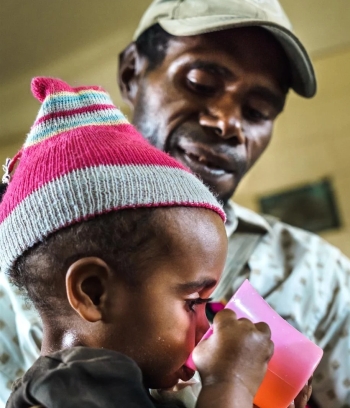Faster rehabilitation weight gain is associated with liver fat in adult survivors of childhood severe acute malnutrition
Abstract
Background
Nutritional rehabilitation during severe acute malnutrition (SAM) aims to quickly restore a healthy body weight, but rapid weight gain has been associated with later cardiovascular risk. We hypothesized that faster weight gain during SAM rehabilitation and post-hospitalization is associated with liver fat in adult survivors.
Method
Jamaican adult survivors of childhood SAM underwent abdominal CT scan to estimate liver fat as mean liver attenuation (MLA) and liver spleen ratio (L/S). Birth weight (BW) and anthropometry measured during, and post-hospitalization were abstracted from admission records.
Results
We studied 42 marasmus survivors (MRs) and 40 kwashiorkor survivors (KWs). MRs had a lower mean BW (SD) 2.5 (0.8) vs 3.0 (0.7) kg; p=0.01) and were more wasted (p<0.001) and stunted (p=0.03) than KWs on admission to hospital. MRs and KWs had similar rates of rehabilitation weight gain, which was inversely associated with MLA among all survivors of SM (r=-0.246, p=0.029), but only in MRs when assessed by diagnosis (r= -0.449, p=0.004). The association between rehabilitation weight gain and adult liver fat in MRs was not altered by BW, admission wasting or stunting. In KWs, post-hospitalization height gain was inversely associated with MLA (difference = -0.64, 95%CI: -0.64 to -0.13; p=0.006).
Conclusions
Faster rehabilitation weight gain is associated with liver fat in adult survivors of childhood severe acute malnutrition. The finding that BW did not influence these outcomes may reflect the timing of the nutritional insult in utero. Target weight gain during nutritional rehabilitation may need to be lowered to optimize long-term outcomes in these children.

Authors retain all copyrights. In making a submission to World Nutrition, they are certifying that all material is theirs except quotations, as indicated, and that they have obtained permission for any photos, tables, or graphics taken from other publications or websites.




